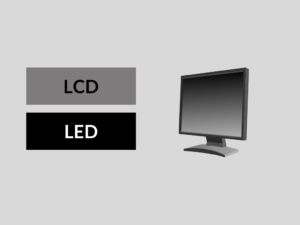LED vs Photodiode: Understanding the Differences
As technology continues to evolve, we are faced with a multitude of advancements that are changing the way we live and work. In the world of electronics, LED and photodiode are two technological innovations that have become commonplace over the years. While both of these technologies are used extensively, they are fundamentally different from each other. In this article, we will explore the differences between LED and photodiode as well as the various applications where they are used.
What is LED?
LED stands for Light Emitting Diode. It is a semiconductor device that emits light of a specific wavelength when an electric current is passed through it in the forward direction. LEDs are used in a variety of electronic devices such as smartphones, televisions, car headlights, and even traffic signals.
Examples of LED
Some popular examples of LED are:
1. Indicator lights on electronic devices
2. Automotive headlights
3. Backlighting in televisions and computer monitors
4. Flashlights and lamps
5. Outdoor and indoor lighting
Uses of LED
LEDs are used extensively in numerous applications, some of which are:
1. Lighting – LEDs are used as a source of light in a variety of applications, including residential, commercial, and industrial lighting.
2. Automotive – LEDs are widely used in automotive applications such as headlamps, taillights, and turn signal lights.
3. Displays – LEDs are ideal for displays because they can emit light of different colors and are energy-efficient.
4. Medical Devices – LEDs are increasingly being used in medical devices for their bright, non-intrusive lighting characteristics.
What is Photodiode?
A photodiode is a semiconductor device that converts light into an electrical current. When photons of light interact with the semiconductor material of the photodiode, it generates a flow of electrons. Photodiodes are used in a variety of applications such as optical communication, photometry, and sensing.
Examples of Photodiode
Some popular examples of photodiodes are:
1. Light sensors in cameras
2. Optical communication systems
3. Smoke detectors
4. Barcode readers
5. Flame sensors
Uses of Photodiode
Photodiodes are used extensively in various applications such as:
1. Optical communication – Photodiodes are used in fiber optic communication systems to convert optical signals into electrical signals.
2. Sensing – Photodiodes are used to sense light intensity and to detect the presence of objects.
3. Medical Devices – Photodiodes are used in medical devices such as oximeters, which measure the oxygen saturation in the blood.
4. Radiation Detection – Photodiodes are used in radiation detectors to measure the amount of ionizing radiation present.
Differences between LED and Photodiode
To help you understand the fundamental differences between LED and photodiode, we have created a comprehensive table below:
| Difference Area | LED | Photodiode |
|---|---|---|
| Functionality | Emits light | Converts light into electrical current |
| Material Used | Semiconductors such as gallium arsenide, indium gallium nitride | Silicon, germanium |
| Power Consumption | Low | High |
| Efficiency | Higher | Lower |
| Spectral Range | Limited | Broad |
| Operating Temperature | Higher | Lower |
| Size | Small | Large |
| Cost | Higher | Lower |
| Application areas | Lighting, automotive, displays | Medical, smoke detectors, sensing, barcode readers |
| Polarization | Non-Polarized | Polarized |
Conclusion
In conclusion, LED and photodiode are both semiconductor devices that are used in a wide range of applications. There are several fundamental differences between the two technologies, including material used, spectral range, and power consumption. By understanding these differences, you can choose the right technology for your specific needs.
Knowledge Check
1. What is the function of an LED?
– Emits light
– Convert light into electrical current
– None of the above
Answer: Emits light
2. What is the material used to make photodiode?
– Gallium arsenide
– Silicon
– Indium gallium nitride
Answer: Silicon
3. What is the efficiency of an LED?
– Lower
– Higher
– Same as photodiodes
Answer: Higher
4. In which application area, LEDs are mostly used?
– Medical
– Sensing
– Lighting
Answer: Lighting
5. Which one is larger in size, LED or Photodiode?
– LED
– Photodiode
– Same
Answer: Photodiode
Related Topics
1. Differences between LED and OLED
2. Advantages of photodiode in optical communication
3. Benefits of LED in medical devices


